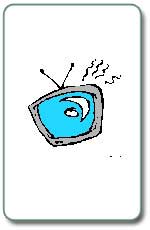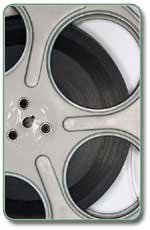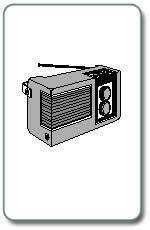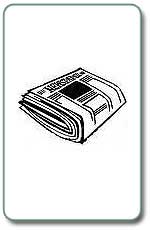![]() | Find us on Google+
| Find us on Google+
©2004 Marketing for Profits
Ltd - T/A MfP Website Marketing, Top Floor, 33 Southbourne Grove, Bournemouth, BH6 3QT,
UK.
Reg in England, number 3598244
![]() Tel: 01202-257423
Tel: 01202-257423 ![]() Fax:
01202-257423
Fax:
01202-257423 ![]() e-mail:
e-mail:
MfP
Website Marketing Services - based in Bournemouth, serving Poole & Christchurch, Dorset and Hampshire
13. Advertising
| > marketing planning overview > |
| 1. overview | 2. planning | 3. swot | 4. marketing plan | 5. marketing mix | 6. product |
| 7. price | 8. promotion | 9. place | 10. literature | 11. public relations | 12. promos |
| 13. advertising | 14. sponsorship | 15. sales |
Advertising is the most widely known weapon in the marketing armoury. This is a paid medium involving radio, TV, poster-sites, press, or direct mail. Each medium offers several advantages and disadvantages which I will touch on below. However, it is not my intention to say much about advertising for the following reasons.
- As far as small businesses are concerned, this is the marketing weapon they are most familiar with and have most expeience of.
- It can be a very expensive weapon and one that has very often left the small business owners feeling 'cheated' because it has not generated the results they were looking for.
- One of the goals of this site is to point out to small businesses that there are a number of other weapons that can be used to communicate their wares apart from advertising, and that these other methods need not be expensive.
- Any advertising that is done by a small business is (or should be) very targetted and as such would not necessarily fit into any generalised 'rules' I might set out here.

Television
Television, with its properties of sound and
moving pictures, makes it the fastest and most dynamic medium for selling
products and services. Also consider the fact that most people relax in front
of the television and tend to "surrender" to it. The brain becomes relatively
inactive, therefore advertisements with a production quality that are often far
better than the quality of the surrounding programmes can have quite a dramatic
impact. This is particularly useful for products with minimal intrinsic
interest whose advertisements in the press for example would be largely
ignored.
Television is a useful medium for telling a story or for
demonstration purposes. The fact that viewers are very often in a relaxed mode
also leads to one of the disadvantages of this medium -- namely that the
message needs to be easily understood. It is not like a press advertisement
where are you can re-read the information in order to clarify the message.
Historically, television has been a pure mass media method of
advertising and so has been used extensively by companies promoting F.M.C.G.
(fast-moving consumer goods). With the explosion in television channels this is
now not necessarily the case and a relatively high degree of targeting can be
achieved.

Cinema
The cinema is superficially very similar to
television. But with two key differences.
1. The audience tends to be
much younger -- in the 15 to 25 age bracket. This is good for certain clothes
manufacturers as well as for less (cool) service providers such as banks and
building societies.
2. The audience is much more awake and hence more
inclined to become involved in a more complicated story.

Radio
With the high regionalisation of radio stations this medium can be very popular with small to medium-size companies attempting to build up a local or regional business. It goes without saying that the production costs of radio advertisements are a lot less than a TV or cinema advertisement and of course the cost of the advertising space itself is a lot less because of the greatly reduced size of audience.
Press
Press is a static medium - words and still
pictures. It is therefore the prime medium for communicating information in
detail such as financial interest rates, performance of cars, etc., etc.. Also,
press advertisements can be kept and referred to at a later date. 
Reading is a dynamic activity and the mind is very much awake. The
reader is very likely to be actively seeking information and when the
advertising message coincides with the reader's interest the probability of the
sale is massively increased. However, the readers are also very selective and
given the huge number of printed advertisements available it is very easy for
them to skip over the vast majority of them.
The key objective therefore in
press advertising is to make sure the attention of the reader is grabbed!
Posters
The poster, because of the way in which it is
seen, is very different from newspaper or magazine advertisements. Reading is
usually a private activity and therefore newspapers and magazines can carry
advertisements for personal products which could look out of place in more
public settings such as on television or on posters. Conversely, the poster is
a highly public medium that can be seen by crowds of people at any one time. 
They also have the very distinct advantage of being at very specific
locations. This factor has been extensively used by the large supermarkets who
wish to make the local population aware of the proximity of their local store.
Of course the major disadvantage is the fact that posters are usually
seen on the move, often at 40 mph, and of the hundreds we pass in any given
week very, very few are actually looked at. Good posters demand strong graphics
and few words!




